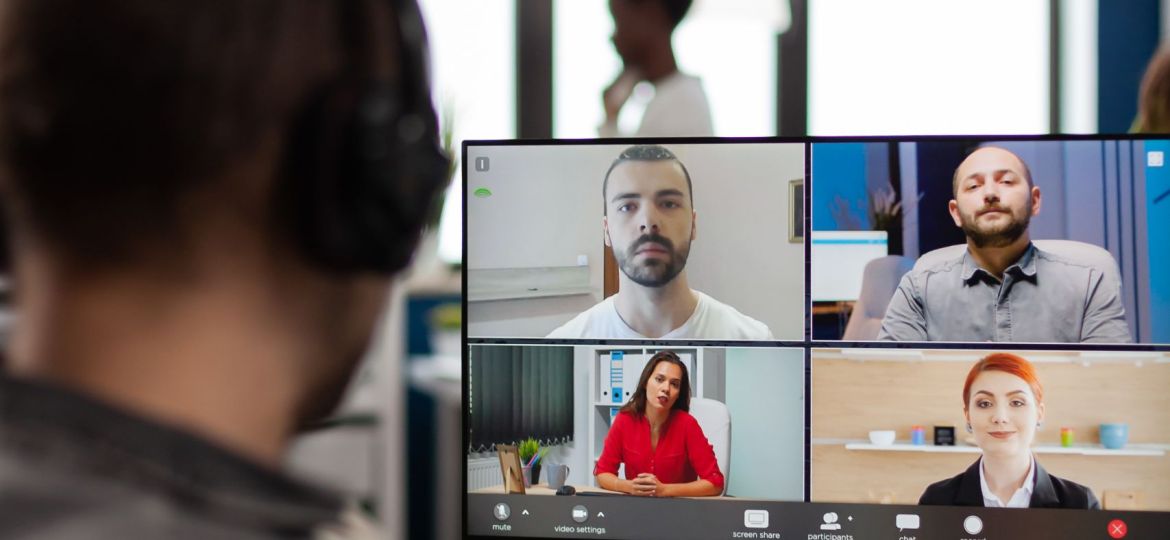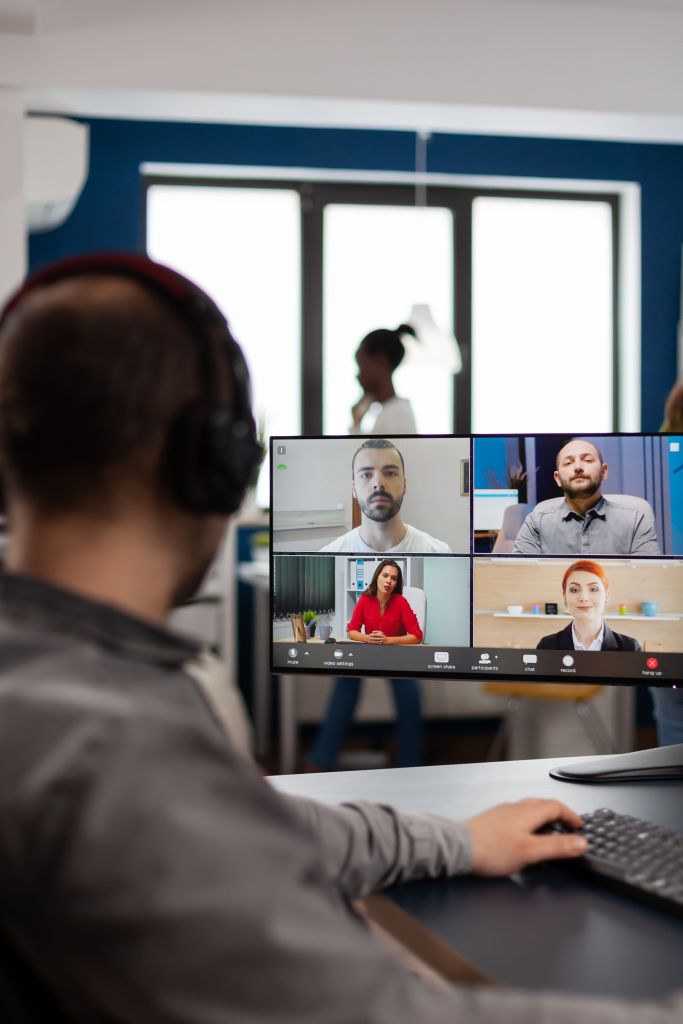

In this article, we delve into the pressing issue of video conference security in today’s digital era. As technology advances and remote communications become commonplace, the need to protect confidentiality has never been more essential. Join us as we unravel the potential pitfalls and vulnerabilities that can compromise your confidential discussions, revealing practical strategies to safeguard your sensitive information. Get ready to equip yourself with invaluable insights, as we promise to empower you with the knowledge to ensure secure and private video conferences. Stay tuned for a truly enlightening journey ahead.
The Growing Importance of Video Conference Security
In this era of digitization, where the world is more interconnected than ever before, video conferences have become an integral part of business operations. With the convenience and efficiency they offer, it’s no wonder their popularity continues to soar. However, as organizations increasingly rely on video conferencing to conduct confidential meetings and share sensitive information, the importance of video conference security has never been more critical.
The exponential growth in remote work arrangements has further amplified the need for robust security measures. As professionals from diverse locations connect virtually to discuss strategic plans or negotiate sensitive deals, safeguarding confidentiality becomes paramount. The potential consequences of a security breach during a video conference are far-reaching and can lead to financial losses or reputational damage for both individuals and organizations.
This highlights the urgency for companies to proactively address video conference security concerns by implementing comprehensive strategies that protect against potential risks. By staying ahead of emerging threats through continuous assessment and adopting best practices, businesses can ensure that their virtual meetings remain secure sanctuaries where confidential discussions can take place without fear or interruption. In doing so, they not only safeguard their own interests but also foster a culture of trust among participants, promoting collaboration and innovation in the digital landscape.
Understanding the Risks Associated with Video Conferencing
In the vast realm of digital communication, video conferencing has emerged as an invaluable tool, enabling seamless interaction among individuals across geographies. However, it is crucial to comprehend the risks that accompany this convenience. One notable concern is the potential for unauthorized access to sensitive information. Hackers and malicious actors are always on the lookout for vulnerabilities in video conferencing software to exploit. Another significant risk lies in the possibility of eavesdropping and unauthorized recording of conversations. As video conferences often involve discussions on confidential matters, it becomes imperative to ensure that such interactions remain shielded from prying eyes and ears. Moreover, inadequate security measures can lead to data breaches and unauthorized sharing of files or documents during a conference session.
To add another layer of complexity, one must also consider the threat posed by phishing attacks that target unsuspecting participants through deceptive emails or messages containing malicious links or attachments. These cyber threats can compromise the integrity of an entire video conference, jeopardizing not only confidentiality but also the participants’ trust in utilizing this medium for critical discussions.
While understanding these risks might seem daunting, it is important to approach them with optimism rather than trepidation. By identifying potential vulnerabilities and implementing robust security measures, we can harness the power of video conferencing while safeguarding confidentiality in our digital era.
Best Practices for Securing Video Conferences
In the realm of video conference security, adhering to best practices ensures that the confidentiality and integrity of these virtual gatherings remain intact. Firstly, it is crucial to keep all software and hardware components up to date by installing regular updates. This optimizes their performance and enhances their resilience against potential cyber threats.
To further fortify video conferences, participants should employ strong passwords that combine an elaborate amalgamation of letters, numbers, and symbols. Additionally, implementing multi-factor authentication adds an extra layer of protection by verifying user identity through something they know (password) and something they possess (like a unique code sent via text message).
Moreover, enabling end-to-end encryption is paramount in safeguarding sensitive information shared during video conferences. This cryptographic protocol ensures that data remains encrypted throughout transmission and can only be deciphered by authorized recipients. By incorporating these best practices into the fabric of video conferencing, individuals can engage confidently in secure communication channels while fostering an atmosphere of trust and confidentiality.
Implementing Strong Authentication Measures for Participants
Ensuring the authenticity of participants is paramount in establishing a secure video conferencing environment. With the increasing prevalence of cyber threats, it is crucial to implement robust authentication measures that go beyond mere usernames and passwords. One effective approach is the utilization of multi-factor authentication, where participants are required to provide additional verification steps, such as biometric data or unique tokens.
By employing multi-factor authentication, organizations can significantly reduce the risk of unauthorized access to video conferences. This enhanced security measure not only instills confidence in participants but also fortifies the confidentiality aspect of digital communications. The use of biometrics, such as fingerprint or facial recognition technologies, adds an extra layer of protection against identity theft and impersonation attempts.
Moreover, incorporating unique tokens that are shared only among authorized participants further strengthens authentication protocols. These tokens act as digital signatures that validate each participant’s identity and ensure that only legitimate individuals gain access to sensitive discussions. Implementing such stringent authentication measures not only bolsters security but also fosters a sense of trust among participants, enabling them to engage in open and confidential communication without fear or hesitation.
Protecting Data and Information During Video Conferences
In the realm of video conference security, safeguarding data and information exchanged during virtual meetings is of paramount importance. With cyber threats looming at every corner, it becomes crucial to employ robust measures to protect the confidentiality of sensitive information. Encryption emerges as a powerful tool in this regard, encoding data so that it can only be accessed by authorized recipients. By utilizing end-to-end encryption protocols, organizations can ensure that their video conference discussions remain shielded from prying eyes. Moreover, implementing access controls and permissions further fortifies data protection during video conferences. By assigning user roles and granting appropriate privileges, organizations can restrict access to confidential files or documents shared within the virtual meeting space. This not only enhances privacy but also prevents unauthorized individuals from altering or disseminating sensitive information.
To augment data security in video conferences, participants should be educated on best practices for sharing and handling confidential materials. Encouraging the use of secure file transfer mechanisms within the conferencing platform and promoting the avoidance of downloading files locally can significantly reduce vulnerabilities that could potentially compromise sensitive information. By fostering a culture of security-consciousness among participants, organizations can create a collective shield against potential breaches.
In this digital era where virtual communication has become indispensable, protecting data and information during video conferences has become an imperative responsibility for all stakeholders involved. Adhering to robust encryption standards, implementing access controls, and fostering security-conscious practices among participants will ensure that confidential information remains guarded in the ever-evolving landscape of digital interactions
Ensuring Secure Connectivity for Video Conferencing
In the realm of video conferencing security, establishing a robust and secure network connection is of paramount importance. While the allure of wireless connectivity may be enticing, it is imperative to opt for a wired connection whenever possible. The hardwired infrastructure provides a more reliable and secure medium, minimizing the risk of data breaches or unauthorized access.
To further fortify the connectivity, organizations should implement Virtual Private Network (VPN) technology. By encrypting data transmissions and creating a virtual tunnel between participants, VPNs shield sensitive information from prying eyes. This added layer of protection not only enhances confidentiality but also fosters trust among participants, enabling them to engage in open and honest discussions without apprehension.
Additionally, regularly updating software applications such as firewalls and anti-virus programs helps safeguard against potential vulnerabilities in the network. These updates bolster defense mechanisms by patching any identified security loopholes, thwarting potential cyber threats before they can exploit any weaknesses.
Conclusion
In a world where digital communication has become the norm, ensuring the security and confidentiality of video conferences is of paramount importance. By understanding the risks associated with this medium and implementing best practices, organizations can protect their valuable data from falling into the wrong hands. Robust authentication measures and secure connectivity protocols provide a solid foundation for safeguarding video conferences. With an optimistic outlook, we can confidently embrace the possibilities of technology while mitigating potential security threats. Let us foster a future where digital interactions are characterized by trust, privacy, and unwavering confidentiality.

